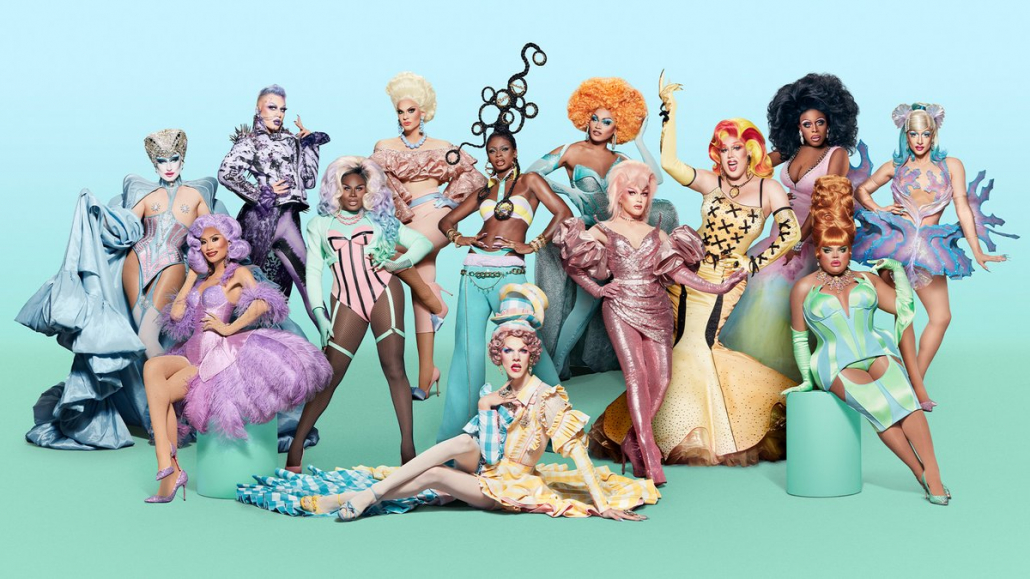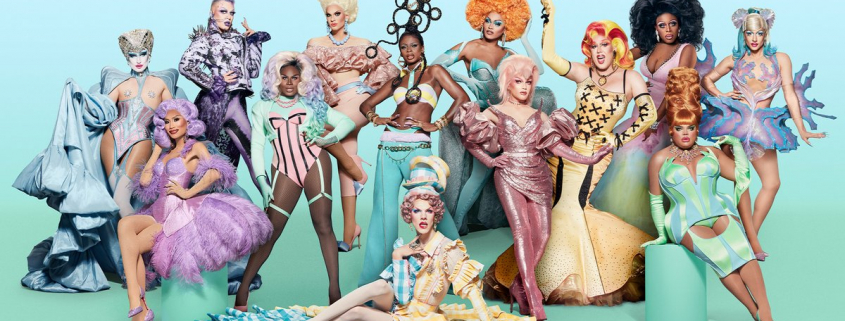REVIEW: ‘RuPaul’s Drag Race’ celebrates queer joy with excellently-cast Season 13

This review contains spoilers.
After almost four months of airing, “RuPaul’s Drag Race” season 13 ended its sixteen-episode run and crowned a winner on Friday. Tied for having the most episodes of any season in the show’s history, season 13 was also the first American season to be filmed entirely during the pandemic. But rather than limiting the show or dampening its joy, the strange new circumstances breathed new life into “Drag Race,” showcasing the persistent power of drag to inspire and producing one of the most entertaining and spectacular seasons in recent memory.
Above all, what made season 13 such a joy to watch was its cast of queens. The thirteen-person roster touted what felt like a particularly diverse variety of talents, drag-styles and personalities. This is evident by even just looking at the season’s top four queens: from Los Angeles-based queen Gottmik’s edgy clown-white makeup to New-York-City-based Kandy Muse’s wild brand of humor, there was someone for everyone to root for.
The season’s champion — L.A.-based Symone — was a fantastic addition to the exclusive list of queens crowned America’s Next Drag Superstar on the show. Throughout the season, Symone rocked the runway with her high-fashion looks that celebrated Black culture and won over judges and viewers alike with her lovable personality and candid vulnerability.
While the crown will rest well on Symone’s perfectly-styled wigs, this season was truly a race all the way to the finish line. Although Symone was a frontrunner from the beginning, competition was stiff with queens such as finalists Rosé and Gottmik all excelling in different areas. It was a close call all the way up until the very end, which made the season all the more exciting to watch.
One thing Season 13 will be remembered for is its excellent runways. Producers came up with original categories like beast couture, beads and fascinators that encouraged queens to think outside the box and bring their best drag — and the cast delivered.
Week after week, the queens brought elevated looks to the mainstage, exemplifying the high bar that “Drag Race” has set and the increasing intersection of drag and the high-fashion world. This level of expertise was upheld in design challenges too, with Minnesota-based Utica Queen delivering one of the most impressive looks ever made in the workroom, created entirely from sleeping bags for the “Bag Ball” challenge.
In addition to serving jaw-dropping runways, season 13 also brought the laughs. This season’s iteration of the show’s infamous “Snatch Game” celebrity impersonation challenge was especially impressive with Gottmik and Rosé, again, as definite standouts. Chicago-based queen Denali and Atlanta-based queen LaLa Ri delivered wonderful, high-energy lip syncs, checking yet another box for what makes a good season of the show.
Newer seasons of “Drag Race” often receive some criticism from fans who believe the show has become overproduced and less authentic throughout the years. Unfortunately, season 13 doesn’t make a great case against the argument. Producer meddling was apparent from the first episode, where, in a twist, the queens all lip-synced two-by-two immediately upon arriving. The queens who lost their lip syncs were then separated from those who won, and the two groups each got their own traditional premiere episode.
This twist was clearly employed to create tension within the cast and produce a “winners vs. losers” storyline that could be utilized throughout the season. However, pairings and judging in the episode favored some queens more than others, and the show never really took the storyline it worked so hard to set up anywhere interesting.
Instead, it just robbed viewers of the delight of getting to see all the queens first meet in the workroom, as well as produced a boring, repetitive episode that failed to showcase the plethora of talents the cast had. Luckily, the premiere proved to be just a brief misstep.
Judging throughout the season was questionable at times as well, but “Drag Race” fans have come to expect this. Denali landed in the bottom twice for minor offenses while judges seemed to overlook flaws in other queens’ performances. NYC-based queen Tina Burner was given passes for underwhelming looks all season, then booted abruptly, essentially because the judges were tired of her.
Luckily, judging inspired only minor frustration. Every queen presented who they are and what they do — even first-eliminated Kahmora Hall got to showcase her glamorous fashion for three episodes due to the season’s lengthiness. Even though the season narrowed its pool of contestants slowly, it didn’t feel like it dragged. Instead, extra time with queens felt like the show respected their art and allowed audiences to get to know them and their drag as much as possible.
Overall, season 13 of “Drag Race” possessed a joyful quality that’s hard to pinpoint. Maybe it was a result of newfound gratefulness in the wake of the national lockdown. Maybe it was queens like Symone and Gottmik — the first transgender man to compete on the show — representing their communities with such grace and pride. Or maybe the cast of queens possessed a stronger chemistry with each other than other casts have. Maybe it was for all of those reasons and more.
Whatever it was, season 13 was an absolute joy to watch and the show’s best since the similarly excellently-cast season nine. If the show continues to cast such talented, diverse groups of queens, it’s exciting to think where it could be. The show carries the heavy responsibility of bringing drag — and queer culture — to mainstream audiences, but it still has fun doing so.

